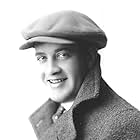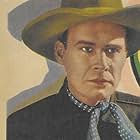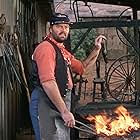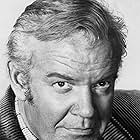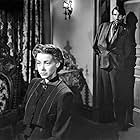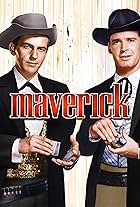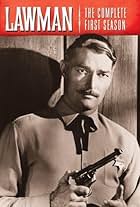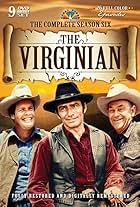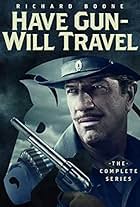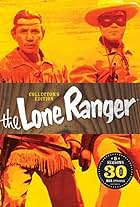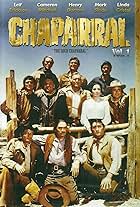NOTE IMDb
8,0/10
2,2 k
MA NOTE
A drifter who goes from town to town helping the townspeople with their problems.A drifter who goes from town to town helping the townspeople with their problems.A drifter who goes from town to town helping the townspeople with their problems.
- Nommé pour 1 Primetime Emmy
- 1 victoire et 1 nomination au total
Parcourir les épisodes
Avis à la une
I too enjoy watching the old Cheyenne re-runs! He's truly the most beautiful man I've ever seen. The bare chest scenes are nice, but he seems to get beat up in every episode. That kills me, but I know he'll always triumph in the long run, after all it's his show! I have to force myself to remember he is now 81 years old. He has a web site where you can purchase autographed posters, and send emails. He seems to stay pretty active. I love watching all the old westerns on cable. The Rifleman, and the Big Valley are also among my favorites. The Westerns channel is the first place I go when I turn on the television, as long as I can beat my husband to the remote!
10junertcb
How wonderful to see the re-runs now of "Cheyenne". Clint Walker was my mother's favourite western actor. She loved the way he looked and the way he talked and his soft-spokeness. I don't think she would have cared if Mr. Walker could even act because he was so 'gorgeous' to her. Fortunately, he was terrific in his role and we never missed an episode. Those were the days of real television..the 'Golden' days, I think they call them and you can see why. Families could sit down and watch such great shows together and not worry about bad language or overt violence. Since I was growing up in England, I learned a lot about America and the old western days. It was fascinating and gave me the courage to come over and see it,years later. It is still fascinating and thank goodness we can all see these shows again and truly realise how great they were.
Lots of TV westerns had a wanderer as the protagonist hero. You could write a limitless variety of stories that way. Cheyenne with its laconic hero Cheyenne Bodie was the first of many westerns that Warner Brothers produced for television. Clint Walker, all 6'7" inches of him was an ideal cowboy hero. Unlikely he'd ever be cast with John Wayne because the Duke liked looking up to nobody.
Walker was in fact more suggestive of Gary Cooper than Wayne. If he had been born 20 years earlier he would have been a great B picture cowboy hero. In fact it was Warner Brothers who realized that the B western did not die, but moved to television. Cheyenne was the first of a dozen or so westerns that Warner Brothers did for television. The most successful of which was Maverick because it's star James Garner had the biggest career undoubtedly.
When Cheyenne ended its run Walker found that westerns on the big screen were in eclipse. Possibly he should have looked for another television series. His best known big screen movie role was one of The Dirty Dozen.
Too bad Cheyenne was not done in color. It would get a lot of run on the TV nostalgia channels. As for Walker his Cheyenne Bodie was a jack of all western trades and did them all in Cheyenne's run.
Clint Walker was a model cowboy hero and deserves to be remembered as such.
Walker was in fact more suggestive of Gary Cooper than Wayne. If he had been born 20 years earlier he would have been a great B picture cowboy hero. In fact it was Warner Brothers who realized that the B western did not die, but moved to television. Cheyenne was the first of a dozen or so westerns that Warner Brothers did for television. The most successful of which was Maverick because it's star James Garner had the biggest career undoubtedly.
When Cheyenne ended its run Walker found that westerns on the big screen were in eclipse. Possibly he should have looked for another television series. His best known big screen movie role was one of The Dirty Dozen.
Too bad Cheyenne was not done in color. It would get a lot of run on the TV nostalgia channels. As for Walker his Cheyenne Bodie was a jack of all western trades and did them all in Cheyenne's run.
Clint Walker was a model cowboy hero and deserves to be remembered as such.
Cheyenne was one of the original three (along with Gunsmoke and The Life and Legend of Wyatt Earp) 'adult' westerns to hit TV in the fall of 1955, kicking off a trend that would dominate all three networks for the next five or six years, until the once original concept turned to formula and all the fun went out of the genre owing to overexposure. In truth, there was no one quite like Clint Walker - to say that he was tall in the saddle is to understate the case. Like Fess Parker as Davy Crockett (on the same network, ABC) one year earlier, his huge physical stature but gentle country voice won him instant stardom and, adult western or no, the hero of every kid in America. Actually, Cheyenne wasn't a series in the true sense during its first season, but broadcast one out of every three weeks as part of an anthology called WARNER BROS. PRESENTS. The other two entries were King's Row with Robert Horton and Jack Kelly (soon to reappear on Wagon Train and Maverick) and Casablanca, a take off on the old Bogart movie of that name. Immediately, the ratings for Cheyenne went through the roof while the other two just sat there. By mid-season they were gone and Cheyenne was seen on reruns every week through the summer. Two things about that first season: though the show ran an hour, each episode was not a normal hour length installment (50 mins.) but between five and ten minutes less than that, owing to 'behind the scenes' previews of upcoming WB movies. Also, this was the only season when Cheyenne had a sidekick, played by L.Q. Jones, later a regular in the Sam Peckinpah stock company. One last thing about the opening season - the episodes were far more spectacular than any to follow, as WB actually did mini remakes of big budget western films, using the stock footage from them and simply replacing whoever had starred with Clint. So the feature film Charge at Feather River with Guy Madison became West of the River with Clint. The Indian charge is identical in both. Most of us didn't know anything about stock footage then and were under the impression (for a while) that WB was knocking out a major league western for TV every three weeks. When Cheyenne came back in 1956, it was a full hour, no sidekick, and ran every other week, alternating with CONFLICT, mostly composed of pilots for possible future WB shows. the next year, Conflict was gone and Sugarfoot with Will Hutchins became the rotating item with Cheyenne, this western also quickly becoming a hit. The following year, Cheyenne was on the air but Clint wasn't. He'd left WB in a salary dispute. So the weirdest thing happen - Cheyenne ran with no Cheyenne in sight, rather Ty Hardin as Bronco Lane. When Walker returned the following fall, Cheyenne shifted to Monday (often, it ran weekly now) with Bronco and Sugarfoot rotating on Tuesdays. By this time, the western was playing out, so both Sugarfoot and Bronco were absorbed into Cheyenne, the package now called "The Cheyenne Show," each of the three seen once every three weeks. In one episode, all three were together. Then Sugarfoot was dropped and Cheyenne and Bronco rotated. By this time, the heyday of the western was over. Warner Bros. replaced Cheyenne late in 1963 with another western, Badlands, which lasted less than half a year. And, in truth, during its final two or three seasons, Cheyenne was awfully routine, in terms of scripting, direction, etc. But that first season was a real winner, and the next two or three were strong too. Worth catching again at least those heyday episodes.
At 6' 6" and a strapping 235 lb. of solid muscle, Clint Walker has got to be the ultimate, most impressive-looking cowboy ever to set foot in a 1950's TV Western that I've ever seen.
All rugged brawn and chiseled good looks, the 29 year-old Walker certainly cut a mighty impressive image playing the title character in this superbly produced Wild West cowboy show from yesteryear.
From 1955 to 1962 the ultra-masculine Walker starred in this phenomenally popular western program that (on a weekly basis) aired its 50-minute, action-packed episodes through the courtesy of Warner Bros. Studios.
A loner, a drifter, and a jack-of-all-trades, Cheyenne Bodie was not a man of many words, but he was known to be fair-minded and just - And, as an added bonus, this husky dude was certainly quite capable of settling scores with his fists as well as with a gun.
Always towering over everyone else in the cast, Clint Walker easily ranks right up there as one of my favorite TV cowboys of all time.
To a total cowboy-junkie, like myself, Clint Walker, as Cheyenne Bodie, was "the right stuff" - A man that Western legends are made of.
All rugged brawn and chiseled good looks, the 29 year-old Walker certainly cut a mighty impressive image playing the title character in this superbly produced Wild West cowboy show from yesteryear.
From 1955 to 1962 the ultra-masculine Walker starred in this phenomenally popular western program that (on a weekly basis) aired its 50-minute, action-packed episodes through the courtesy of Warner Bros. Studios.
A loner, a drifter, and a jack-of-all-trades, Cheyenne Bodie was not a man of many words, but he was known to be fair-minded and just - And, as an added bonus, this husky dude was certainly quite capable of settling scores with his fists as well as with a gun.
Always towering over everyone else in the cast, Clint Walker easily ranks right up there as one of my favorite TV cowboys of all time.
To a total cowboy-junkie, like myself, Clint Walker, as Cheyenne Bodie, was "the right stuff" - A man that Western legends are made of.
Le saviez-vous
- AnecdotesThis was U.S. television's first hour-long western.
- ConnexionsEdited into Gold, Glory and Custer (1964)
Meilleurs choix
Connectez-vous pour évaluer et suivre la liste de favoris afin de recevoir des recommandations personnalisées
- How many seasons does Cheyenne have?Alimenté par Alexa
Détails
- Durée1 heure
- Couleur
- Mixage
- Rapport de forme
- 2.35 : 1
- 4:3
Contribuer à cette page
Suggérer une modification ou ajouter du contenu manquant















